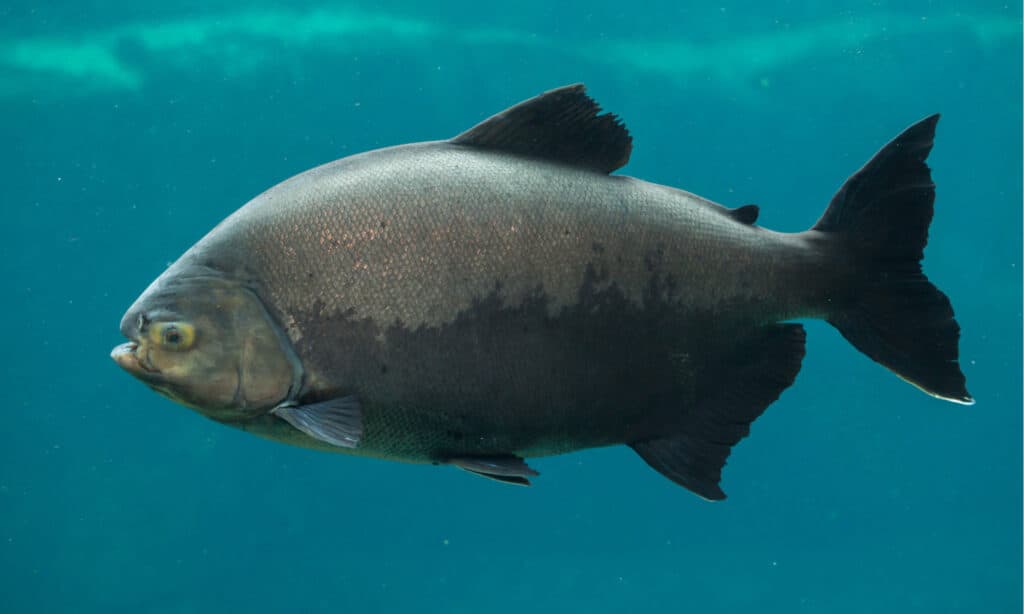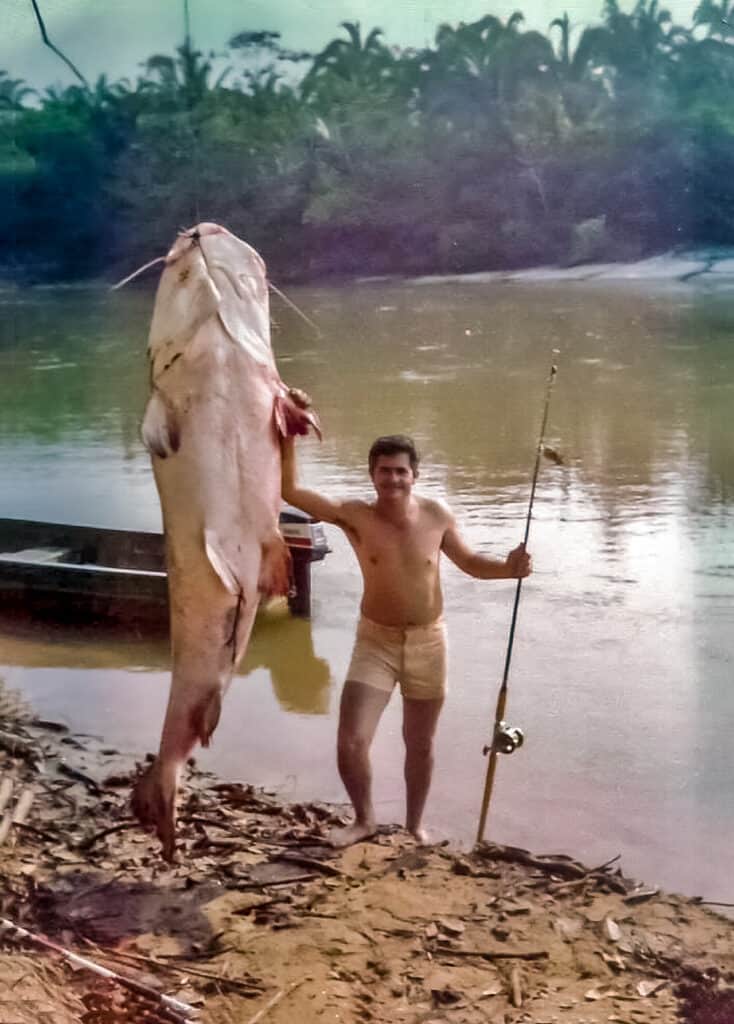The Amazon River is home to a diverse array of plant and animal species, with more than 3,000 species of freshwater fish and almost 400 reptiles. River monsters come in all shapes and sizes in the Amazon, but we are going to focus on the biggest fish to be found within the raging waters.
There are anacondas, crocodiles, pink river dolphins, jaguars, and more making their home along the Amazon River. Those are impressive species enough, so one may not consider the fish which make their home beneath the surface.
Anglers from all over the world come to the Amazon River to fish some of the largest species of fish to be found in the world. Many of these fish are actually carnivorous as well, making them an exemplary challenge for the experienced angler or fisher.

Biggest does not always translate to weight. Some of these big boys grow very large in size but don’t weigh as much as other, more dense, fish. We will focus on both weight and size and make educated decisions on who ends up where on our list.
Many of these fish are monstrous in both size and temperament. They hunt other fish and are masters of the waters through which they roam. Let’s start off with the best-known fish of them all, and then flow through to other, lesser-known fish.
Arapaima

Arapaima grow up to 440 lbs and eight feet long.
©Tatiana Belova/Shutterstock.com
The arapaima, also known as the pirarucu, is the first fish you think of when considering the Amazon River. This is because it is the largest fish to be found within the waters, and is a masterful fish to hunt and catch. It is a popular challenge to try to fish for the arapaima, and that is part of the reason it is heading toward extinction.
Overfishing is a threat to these beautiful creatures because they breathe air and have to surface frequently. Their large size makes them easy to spot and then potentially catch.
Classifying them as vulnerable is difficult though because it is hard to take a proper census of their population due to where they are located. Studies have shown though that they are definitely overfished and populations have depleted by more than 93%.
The arapaima can grow up to 440 lbs and to a length of eight feet. They have hard, armored scales to protect them from predators, though that means nothing to the right angler.
A study in Advanced Engineering Materials shows that piranhas and arapaima have a rich history of coexisting because piranha teeth cannot penetrate the arapaima scales.
The best way to catch these giant fish is with nets or harpoons. When fishing for catch-and-release, they have to be held for around five minutes before being released to make sure they have taken the necessary breaths.
Arapaima have large blood vessels along their spine that can easily be ruptured, so they have to be handled with care before being released.
Tambaqui

Tambaqui can grow up to 3.6 feet and 100 lbs.
©Vladimir Wrangel/Shutterstock.com
The Tambaqui is another large fish native to the Amazon river. It is a popular fish to consume and is very fatty, which is where a lot of its weight comes from. Speaking of weight, it can grow up to almost 100 lbs, and is quite simple to catch.
At first, the tambaqui looks similar to a piranha, but they grow much larger and have a deeply rounded head. The similar expression can have one jumping in alarm though if a smaller tambaqui is reeled in. They come in mostly green that tapers to a gray belly.
The Revista Brasileira de Zoologia put out a study that states what a staple this fish is to the Amazonian diet. They are also known as pacu locally, but that tends to group in other similar types of fish.
A fascinating fact about the tambaqui is that they have strong molar teeth to help them consume fruits, seeds, and nuts, which make up most of their diet. They thrive in many freshwaters but are prone to migrating toward areas with flooded forests to find the food they need. They are also able to survive in waters with low oxygen levels.
Piraíba

Piraíba are among the biggest catfish species, growing up to 330 lbs
©Public Domain – Original
Within communities of the Amazon, the juvenile piraíba is known as “filhote” which means puppy, until it is at a specific weight at which it is appropriate to be caught. That weight is around 200 lbs.
The piraíba is among the biggest catfish in the world. It can grow up to ten feet and weigh in at 330 lbs. That would be enough for a whole catfish fry up, that’s for sure. Their bodies are saturated in taste buds which is how they sense prey, through chemicals they taste in the water.
This fish is more light gray in color with white spots and stains along its scales. The belly is a stark white and they have large shark-like dorsal fins.
This giant catfish eats other fish for the vast majority of its diet, though some have been known to end up consuming monkeys as well if they stray too near to the water. Other animals like dogs, cats, and even other catfish have been found inside of them when caught. They are picky eaters and “taste” their prey before deciding whether or not to eat them.
Also known as the goliath catfish, piraíba really is the prize for many anglers because of how large it gets and how aggressive it can be. It migrates more than 2500 miles to find the perfect place to lay its eggs.
They use their long whiskers to guide themselves through the waters of the Amazon and that means they don’t even need light to see. Piraíba are one of the hardest animals to catch, and legend has it that they will eat a human if given the chance. They keep growing and growing throughout their whole lives.
What Else Lives in the Amazon?

Anacondas are the largest reptilian spaces
©Mark_Kostich/Shutterstock.com
In addition to these impressively-sized residents, the Amazon is also home to the Amazon river dolphin, capybaras, river otters, nutrias, and manatees. Additional mammalian species include agouti, caciques, capuchin monkeys, coati, grisons, paca, porcupines, squirrels, squirrel monkeys, tapirs, and weasels.
Non-mammalian species include caiman, giant catfish, piranhas, and, pirarucu. They also include anacondas. the world’s largest snake, and boas.
Summary of the Biggest Fish in the Amazon River
| Name of Fish | Maximum Weight | Maximum Length | Unique Features |
|---|---|---|---|
| Arapaima | 440 pounds | 8 feet | Must surface to breathe; has armored scales. |
| Tambaqui | 100 pounds | 3.6 feet | Eats fruit, seeds, and nuts. |
| Piraíba | 330 pounds | 10 feet | Largest catfish; eats other fish and small mammals. |
Thank you for reading! Have some feedback for us? Contact the AZ Animals editorial team.








